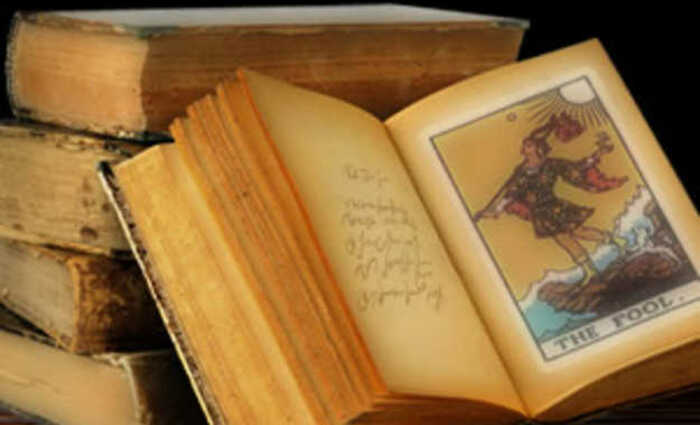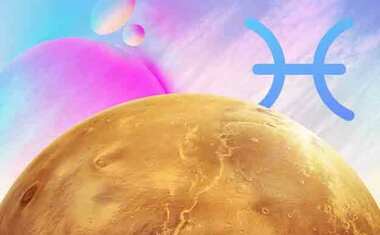
Transmission of Magical Knowledge to the 15th Century
The Magic from the 15 Century
5. Transmission of magical knowledge to the 15th Century
Occultist writers often attribute the transmission of magical knowledge to secret societies. The claim has some basis if we consider the 16th to 20th centuries. However, it does not suffice to explain the transmission from ancient times to the 15th century when the Tarot was invented. There simply are not any secret societies that could have served the purpose (see separate article on Secret Societies and the Tarot) nor is there any hint of such a society in the hundreds of medieval manuscripts that deal with magic.
Alternatively, it is asserted that magical knowledge was passed by word of mouth from master to initiate. Several things argue against the possibility of such a mode of transmission across ~2,000 years. Details would have changed with each "master". Players of the old parlor game know that a story may completely change after it has passed through even a dozen story-tellers. In established oral traditions, such as the QBLH, masters disagreed more than they agreed. Oral traditions must also keep careful records of "who-told-who" to establish the authority of a master. There are no traces of such records.
In contrast to these dubious modes, there is a perfectly simply and well-documented mode of transmission. Until the late 11th century, magic was preserved in monastery scriptoria (i.e., copy rooms) where the Church preserved manuscripts under the dictates of "Know thy enemy". An early source for magic was the "Etymologies" of Isidore (d.638). The section devoted to magic is very specific and gives, for example, many details about divination (Flint 1991).
Jolly (2002) points out that parts of many magical rituals are derived from Christian liturgy making it difficult to study magic texts apart from the monastic contexts that produced the manuscripts. Sometimes it is difficult to determine how much was added by the pious monks. Some of the condemned magic, such as witchs' sabbats, derives from rather fantastic literary sources, largely monastic in origin (Peters 1978). Thus, the condemned magic, in many cases, never actually existed outside the imagination of the monks.
A great burst of interest in magic began in the 12th century when the translation of Arabic and Greek texts began (Burnett 1996). Much of the activity centered on the court of Frederick II in Sicily who maintained good relations with Greek and Arabic states as well as northern Italy. The court supported several Jewish scholars who were fluent in Arabic. Michael Scot had studied in Spain and translated Arabic manuscripts. Master Theodore was a Greek or Jewish scholar who had studied in Antioch and Baghdad. There were also scholars, such as Leo of Pisa and Pascal of Rome, in Constantinople where they access to occult literature in the imperial library. They translated works and brought them back to Italy (Haskins 1924). The result of all this activity was that a number of manuscripts became available in Latin for the first time.
The nature of these new manuscripts was rather different from those preserved in the monasteries. Magic was not put forth as something to be avoided and condemned. Rather magic appeared in a new "scientific" light associated with astrology, alchemy, and medicine. Like many medieval manuscripts, entire works were seldom presented as a unit. Instead, pages of particular interest to the scribe or patron were combined into a volume. For example, the Picatrix, a hermetic work translated in the 13th century, is stated by the author to contain extracts from 224 older works (Thorndike 1923).
By looking at how magical texts were combined into these anthologies we can gain insight into how magic was viewed over subsequent centuries. Works on magic often appear in collections intended for medical doctors. The overall impression is that the writers and collectors were uninterested in demons. Rather they are interested in natural phenomena and a Neoplatonic theory of reality in which the cosmos influences life on earth. For example, the works of al-Kindi are based on the theory that astrological images are naturally empowered by stellar rays, i.e., there is a natural physical empowerment by the higher spheres (Klaassen 1998). Images and natural objects, e.g., herbs and gems, have power that does not depend on ritual or the intercession of demonic forces.
Although knowledge of astrology already existed in Europe, intellectual interest received an enormous boost from the translation of Arabic texts (Faivre 1995). Interest in alchemy was also greatly stimulated by the translations (Kieckhefer 1989). The result was that after the 12th century, the context of magic changed in Europe (Ankarloo and Clark 2002). Magic now contained a healthy dose of "science" that became an integral part of intellectual life. Though it remained controversial, magic now included a component that was critical to medical practice and now had strong defenders.
A second major changed occurred in the 12th to 14th century. Intellectual activity and education were no longer the exclusive province of the Church. The translations were sponsored by secular leaders and magic moved into the court. The courts became patrons and defenders of intellectual activity and magic (Ankarloo and Clark 2002). Although the Church retained a strong role in the spread and preservation of magical knowledge, monastic imagination was no longer the sole source of information.
This period also saw the rise of another intellectual contender, the Franciscan and Dominican friars. "Hardly any class or group of men in the later middle ages were more given to astrology and even to some other occult arts and sciences than the friars. This is a noteworthy point because they furnished a majority of the theologians of the period and had a practical monopoly on the office of inquisitor" (Thorndike 1934 p. 213). Ugo de Castello was a 14th century Dominican bishop who wrote on astrological medicine. John de Stendal was a Dominican and an official Church "censor" but wrote a commentary on astrology. Clearly, by the late medieval period, theologians and inquisitors were not inveterate opponents of the occult sciences.
As we approach the 15th century culture in which the Tarot appeared, we find a variety of sources for magic. There was a monastic tradition, largely concerned with demons and necromancy. There was an intellectual tradition within the Mendicant orders, largely concerned with astrology and other forms of natural magic. There was an intellectual tradition at the secular courts, supporting any defending magic in many forms. Finally, there was a rural folk tradition, largely concerned with superstitions and unlikely to have influenced the urban culture that produced the Tarot.



